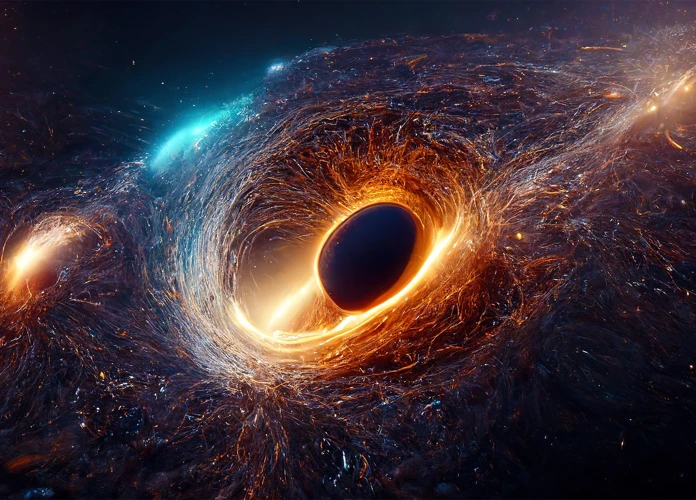Have you ever wondered what lies at the center of galaxies, millions of light-years away? Well, prepare to be amazed, because hidden within these cosmic giants are supermassive black holes – enigmatic and immensely powerful. These enigmatic entities have puzzled scientists and ignited the imagination of stargazers for decades. In this article, we will embark on a journey of discovery as we delve into the mysteries of supermassive black holes, exploring their characteristics, formation, and the vital role they play in shaping the galaxies we see today. Get ready to expand your knowledge and venture into the depths of the universe, where awe-inspiring wonders await.
Contents
- What Are Supermassive Black Holes?
- Formation and Evolution
- Observing Supermassive Black Holes
- The Role of Supermassive Black Holes in Galaxies
- Unanswered Questions and Current Research
- Conclusion
-
Frequently Asked Questions
- What is the difference between a supermassive black hole and a regular black hole?
- How big can a supermassive black hole get?
- Can supermassive black holes devour entire galaxies?
- How are supermassive black holes formed?
- Can supermassive black holes die?
- How do scientists study supermassive black holes?
- Do supermassive black holes emit any form of radiation?
- What is the relationship between supermassive black holes and galaxy evolution?
- Are there any supermassive black holes near our Milky Way galaxy?
- Can supermassive black holes collide?
- References
-
Frequently Asked Questions
- 1. How big can supermassive black holes get?
- 2. Can supermassive black holes be found in every galaxy?
- 3. How are supermassive black holes formed?
- 4. Can supermassive black holes ever die?
- 5. How do we observe supermassive black holes if they don’t emit light?
- 6. What is the role of supermassive black holes in galaxy formation?
- 7. Are supermassive black holes a threat to Earth?
- 8. Can we measure the mass of a supermassive black hole?
- 9. Are there any known supermassive black holes close to Earth?
- 10. Are supermassive black holes responsible for the creation of galaxies?
- References
- Read More
What Are Supermassive Black Holes?
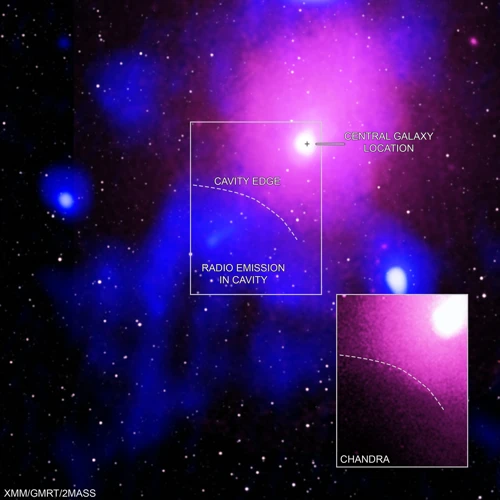
Supermassive black holes are astoundingly mysterious entities that reside at the heart of galaxies, captivating the curiosity of scientists and astronomy enthusiasts alike. These cosmic behemoths differ from their stellar counterparts in terms of mass, with their sizes ranging from millions to billions of times the mass of our Sun. Their gravitational pull is so strong that nothing, not even light, can escape their grasp once it crosses the event horizon. The enormous mass concentrated in an infinitesimally small space creates a gravitational force that warps space-time, making them capable of distorting the paths of nearby objects. Supermassive black holes have peculiar properties, including an extremely high density and an enormous gravitational influence on surrounding matter. Despite their mesmerizing nature, the origin and evolution of these captivating celestial objects remain shrouded in mystery. In the following sections, we will explore the formation and evolution of supermassive black holes, shed light on the techniques used to observe them, and examine their pivotal role in the dynamics and evolution of galaxies. Get ready for an awe-inspiring journey into the enigmatic depths of the cosmos.
Definition and Characteristics
Supermassive black holes possess distinctive properties that set them apart from their counterparts. Here are some defining characteristics of these cosmic giants:
- Exceptional Mass: Supermassive black holes are incredibly massive, with sizes ranging from millions to billions of times the mass of our Sun. Their immense gravitational pull is a result of this immense mass.
- Event Horizon: These black holes have what is known as an event horizon, a boundary beyond which nothing, not even light, can escape their gravitational pull. Once objects cross this point, they are irrevocably drawn towards the black hole’s singularity.
- Gravitational Influence: Supermassive black holes exert an extraordinary gravitational influence on the surrounding matter in their galaxies. Their immense gravity can cause the accretion of interstellar gas and dust, leading to the formation of an accretion disk, which emits vast amounts of energy as it spirals into the black hole.
- Evidence of Existence: Scientists have found evidence of supermassive black holes through various methods, such as observing the high velocities of stars orbiting a dense central region or studying the emission of powerful jets of particles and radiation from active galactic nuclei.
- Formation Theories: While the exact origins of supermassive black holes are still uncertain, scientists hypothesize that they may form through the gradual growth of smaller black holes, mergers of multiple black holes, or the direct collapse of massive gas clouds in the early universe.
Understanding these defining characteristics helps us appreciate the enigmatic nature of supermassive black holes and their significant role in shaping the dynamics and evolution of galaxies. So, let’s continue our exploration and delve deeper into the formation and evolution of these cosmic giants.
Formation and Evolution

The formation and evolution of supermassive black holes is a captivating cosmic process that spans billions of years. The exact mechanisms behind their origin are still a subject of intense research and debate. One hypothesis suggests that they may arise from the remnants of massive stars that undergo gravitational collapse, forming stellar black holes which then merge and accumulate mass over time. Another theory proposes that they could have formed from the direct collapse of immense gas clouds in the early universe. Regardless of their birth, these cosmic giants continue to grow through a process known as accretion, where they gravitationally pull in surrounding matter, such as gas and stars, and add it to their mass. As they accrete mass, their gravitational influence becomes increasingly stronger, and they gain the status of supermassive black holes. The evolution of supermassive black holes is intricately tied to the growth and evolution of galaxies themselves. The interactions between these colossal black holes and their surrounding galaxies have a profound impact on the dynamics and structure of the galactic environment. To unravel the mysteries of the formation and progression of supermassive black holes, astronomers employ a combination of theoretical models, simulations, and observations using cutting-edge telescopes and techniques. By understanding the life cycle of these extraordinary entities, scientists strive to gain deeper insights into the complex interplay between black holes and the vast cosmic tapestry in which they reside.
Birth of a Supermassive Black Hole
At the heart of the formation of a supermassive black hole lies a complex interplay between cosmic phenomena. The prevailing theory suggests that these colossal entities are born from the collapse of massive gas clouds and the subsequent merging of smaller black holes. As regions of dense interstellar gas come together, their immense gravitational forces trigger the collapse of the gas cloud, causing it to shrink and become denser. The immense pressure and extreme temperatures at the core ignite nuclear fusion reactions, giving birth to a new star. However, in some cases, the conditions are so extreme that the collapsing gas cloud bypasses star formation and instead forms a black hole. This process creates what is known as a “seed” black hole, typically with a mass tens or hundreds of times that of our Sun.
Over time, these seed black holes grow by accreting nearby matter. As they are situated at the center of a galaxy, there is an abundant supply of gas clouds and stars that can be drawn toward the black hole by its immense gravitational pull. This material forms an accretion disk around the black hole, swirling around like water spiraling down a drain. Friction within the disk causes the gas and dust particles to heat up, emitting vast amounts of energy in the form of light. This phenomenon can make the black hole visible and allows astronomers to detect them using various observational techniques.
The accretion process continues over millions of years, gradually increasing the mass of the black hole. As more matter falls into the black hole, its gravitational pull grows stronger, leading to a feedback loop that attracts even more material. This process can result in the formation of a supermassive black hole, with millions or even billions of times the mass of our Sun.
While the exact mechanisms behind the formation and growth of supermassive black holes are still subject to ongoing research and investigation, scientists believe that the merger of smaller black holes and the accretion of matter are key contributors. By studying the birth and evolution of these extraordinary celestial objects, we gain valuable insights into the dynamic processes at work in the cosmos.
For more information on how to locate constellations in the night sky, visit our guide on how to locate constellations in the night sky.
Growth over Billions of Years
As supermassive black holes form during the early stages of galaxy evolution, they continue to grow and accumulate mass over billions of years. This growth is a result of various mechanisms that enable these cosmic giants to consume surrounding matter and increase their size and mass. One of the primary mechanisms responsible for the growth of supermassive black holes is accretion. Accretion occurs when nearby gas, dust, and stars are drawn towards the black hole due to its immense gravitational pull. The material forms an accretion disk around the black hole, spiraling inward as it releases an enormous amount of energy in the form of radiation. This disk acts as a cosmic buffet for the black hole, providing a continuous supply of fuel for its growth.
Another process that contributes to the growth of supermassive black holes is mergers. In galaxies, collisions and mergers with other galaxies are relatively common occurrences. When galaxies merge, their central supermassive black holes can end up in a dance of spiraling towards each other, eventually resulting in a cosmic collision. During these interactions, an immense amount of energy is released in the form of gravitational waves, leading to the coalescence of the black holes. This merger event can result in the formation of an even more massive black hole, as the two progenitor black holes combine their masses and become one unified entity.
It is important to note that supermassive black holes do not grow continuously at a constant rate. Instead, their growth is sporadic, with periods of intense activity known as active galactic nuclei (AGNs). During these AGN phases, the supermassive black hole experiences sudden bursts of accretion, causing it to rapidly accumulate mass. The release of energy from these accretion events can outshine an entire galaxy, making AGNs some of the brightest objects in the universe.
While our understanding of the growth mechanisms of supermassive black holes has significantly advanced, many questions still remain unanswered. Scientists continue to explore the complexities of accretion and merger processes, seeking to unravel the intricacies of how these cosmic giants evolve over billions of years. Through ongoing research and innovative observations, we strive to gain a clearer understanding of the growth patterns and behavior of these formidable entities that reside at the heart of galaxies.
Observing Supermassive Black Holes
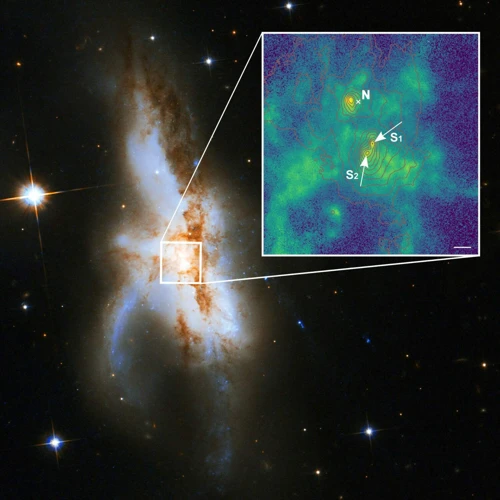
Observing supermassive black holes is an intricate and fascinating endeavor that relies on advanced techniques and cutting-edge instruments. One of the primary methods employed is called spectroscopy, which involves analyzing the electromagnetic radiation emitted by the surrounding matter as it falls into the black hole’s gravitational pull. By studying the different wavelengths of light, astronomers can gain valuable insights into the composition and properties of the material orbiting the black hole. Additionally, astronomers use high-resolution imaging technology to capture detailed images of the region surrounding the black hole, such as the famous image of the supermassive black hole at the center of the M87 galaxy captured by the Event Horizon Telescope. This monumental achievement not only provided a visual confirmation of the existence of black holes but also offered new opportunities to study their behavior and characteristics in unprecedented detail. With continuous advancements in technology and innovative observational approaches, the quest to unlock the secrets held within these cosmic giants continues, taking us closer to unraveling the mysteries of the universe.
Techniques and Instruments
The exploration and study of supermassive black holes rely on a variety of advanced techniques and sophisticated instruments. Here are some key methods used by astronomers to observe and investigate these cosmic wonders:
1. Radio Astronomy: Radio telescopes play a crucial role in the study of supermassive black holes. By detecting radio waves emitted by celestial objects, astronomers can gather valuable data and information. Large radio arrays, such as the Very Large Array (VLA) in New Mexico, provide high-resolution images of black hole environments and their surrounding structures. These observations can help scientists trace the movement and behavior of matter in the vicinity of supermassive black holes.
2. Optical and Infrared Observations: Optical and infrared telescopes allow astronomers to observe the light emitted by supermassive black holes’ surroundings. By studying the distribution and characteristics of this emitted light, researchers gain insights into the properties and dynamics of the black hole and its accretion disk—the swirling disk of matter surrounding the black hole. Instruments like the Hubble Space Telescope and the Keck Observatory provide detailed observations of these phenomena across different wavelengths.
3. X-ray and Gamma-ray Astronomy: X-ray and gamma-ray observations are essential for studying the extremely energetic processes near supermassive black holes. X-rays are produced when matter heats up as it falls into a black hole, creating a glowing, high-energy emission. Instruments like NASA’s Chandra X-ray Observatory and the European Space Agency’s XMM-Newton telescope enable scientists to capture these X-ray emissions and analyze them to understand the extreme physics at work.
4. Gravitational Wave Detection: The recent discovery of gravitational waves has revolutionized our ability to detect and study supermassive black holes. Gravitational wave detectors, such as the Laser Interferometer Gravitational-Wave Observatory (LIGO), can detect the ripples in space-time generated by the dramatic events involving supermassive black holes, such as collisions or mergers. These observations provide valuable information about their mass, spin, and other important properties.
By employing these techniques and instruments, astronomers are continuously deepening our understanding of supermassive black holes and unraveling the mysteries that surround them. The combination of data from different observations helps create a comprehensive picture of these elusive cosmic entities, paving the way for groundbreaking discoveries in the realm of astrophysics.
The Role of Supermassive Black Holes in Galaxies
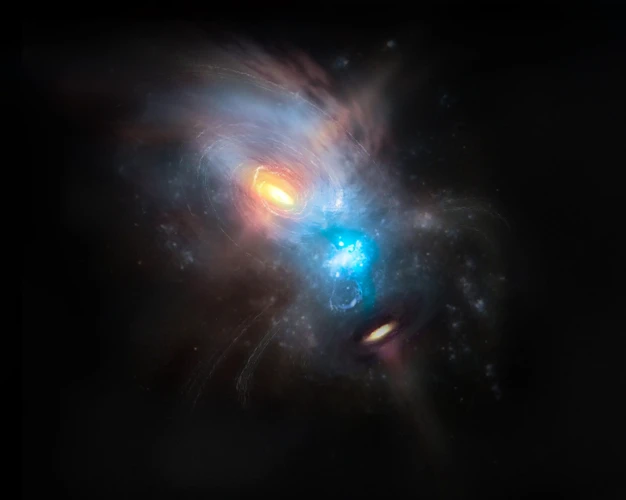
Supermassive black holes, though seemingly formidable and mysterious, play a vital role in the dynamics and evolution of galaxies. They act as cosmic orchestrators, influencing the fate of their host galaxies through various mechanisms. One of their key roles is in regulating the growth of galaxies by controlling the gas and matter in their vicinity. The immense gravitational pull of these black holes can cause surrounding gas and dust to spiral inward, forming a swirling disk known as an accretion disk. As matter falls into the black hole, it releases an enormous amount of energy in the form of radiation and powerful jets of particles. This energetic feedback can have profound effects on the surrounding environment, heating and ionizing nearby gas, and sometimes even halting the growth of new stars. The interplay between the black hole’s gravitational pull and the galaxy’s gas reservoir shapes the overall structure and evolution of the galaxy over cosmic timescales. The remarkable connection between supermassive black holes and their host galaxies continues to be a subject of active research, unraveling the complex interactions that shape the cosmic landscape.
Galactic Dynamics and Evolution
Galactic dynamics and evolution are profoundly influenced by the presence of supermassive black holes. These cosmic behemoths are not just passive entities lurking at the center of galaxies; they actively shape the destiny of their host systems. The immense gravitational pull of a supermassive black hole can disrupt the orbits of nearby stars and other celestial objects, causing them to spiral inward. As these objects fall closer to the black hole, they release vast amounts of energy in the form of radiation. This process, known as accretion, fuels the growth of both the black hole and its surrounding region, creating an energetic phenomenon called an active galactic nucleus (AGN).
The energy released by an AGN can have a profound impact on the galaxy itself. Intense radiation and powerful jets of particles emitted by the supermassive black hole can heat up the surrounding gas and prevent it from collapsing to form new stars. This process, known as feedback, regulates star formation rates and can even halt it completely in some cases. As a result, the growth of the galaxy is significantly affected. The presence of a supermassive black hole and its AGN can also influence and shape the distribution of stars and gas within the galaxy, affecting its overall structure and morphology.
Studies have shown a correlation between the mass of the supermassive black hole and the properties of its host galaxy. This suggests that the formation and growth of these cosmic giants are intricately linked to the evolution of their host systems. The interplay between the gravitational forces of the black hole and the surrounding matter plays a crucial role in shaping the galaxy over billions of years.
Understanding the role of supermassive black holes in galactic dynamics and evolution is an active area of research in astrophysics. Scientists employ various observational techniques, such as studying the motion of stars near the galactic center or analyzing the distribution of gas and dust, to unravel the intricate relationship between supermassive black holes and their host galaxies. By studying these phenomena, scientists gain insights into the processes driving the growth and evolution of galaxies throughout the universe.
As our understanding of galactic dynamics and the influence of supermassive black holes continues to evolve, it opens up new avenues to explore the mysteries of the cosmos and how these celestial giants shape the vast tapestry of the universe.
[For more fascinating insights into the celestial world, check out our article on planetary alignments and their significance in horoscopes and zodiac signs.][/planetary-alignments-horoscopes-zodiac/]
Black Hole Feedback
Black hole feedback refers to the profound impact supermassive black holes have on their host galaxies. These celestial behemoths not only attract matter towards them but also unleash powerful outflows of energy and matter in various forms. This energy release, known as active galactic nucleus (AGN) feedback, plays a crucial role in regulating the growth and evolution of galaxies. AGN feedback can take different forms, including the release of intense radiation, the expulsion of material in the form of high-speed jets, and the creation of powerful shockwaves. These energetic processes profoundly affect the surrounding gas and dust, heating or expelling them from their original locations. The intense radiation emitted by supermassive black holes can ionize nearby gas clouds, influencing the star formation rate and determining the size and shape of galaxies. Additionally, the outflows of matter and energy from a supermassive black hole can heat the surrounding gas, inhibiting its ability to cool and form new stars. This process helps maintain the balance between gas infall and star formation, regulating the growth of galaxies. The intricate interplay between supermassive black holes and their host galaxies through AGN feedback is a key area of research in astrophysics, shedding light on the mechanisms that govern the evolution of galaxies over cosmic timescales. By understanding this fascinating phenomenon, scientists can unlock the secrets behind the intricate dance of matter and energy in our universe.
Unanswered Questions and Current Research
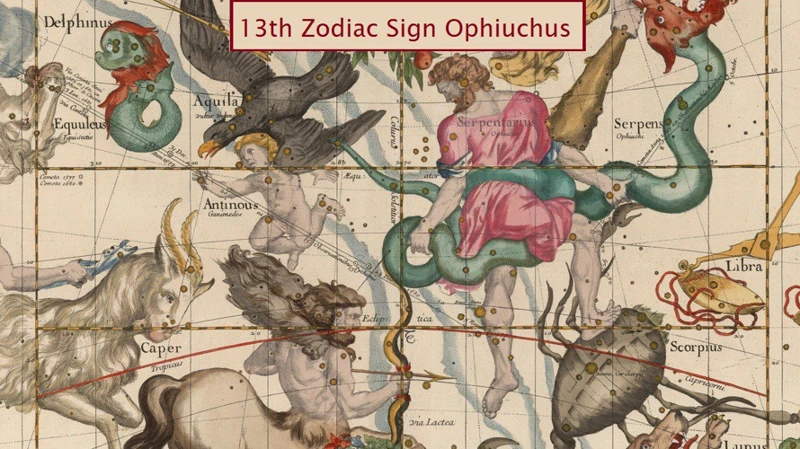
Despite decades of research, numerous questions surrounding supermassive black holes still perplex scientists and leave room for further exploration. One exciting area of current research is focused on leveraging the capabilities of the Event Horizon Telescope (EHT) to capture direct images of these enigmatic cosmic entities. The historic first image of a black hole’s shadow in 2019 provided groundbreaking insights into their nature and confirmed the presence of a supermassive black hole at the center of the M87 galaxy. Additionally, the detection of gravitational waves – ripples in space-time caused by cataclysmic events – has opened up a new avenue for studying black holes and their interactions with surrounding matter. These scientific breakthroughs have sparked a renewed sense of fascination and spurred on researchers to delve deeper into the mysteries of supermassive black holes. By uncovering these secrets, scientists aim to gain a deeper understanding of the fundamental principles that govern our universe. Get ready to embark on a cosmic journey that unveils the hidden wonders of supermassive black holes and explores their connection to the ancient symbolism of Ophiuchus in mythology.
Event Horizon Telescope and Black Hole Imaging
The Event Horizon Telescope (EHT) is an extraordinary scientific endeavor aimed at capturing the unimaginable: an image of a black hole. The project brings together a global network of radio telescopes to create a virtual Earth-sized telescope. By synchronizing the observations of these telescopes, scientists can effectively create an instrument with an unprecedented resolution capable of detecting details finer than ever before.
The EHT’s most groundbreaking achievement came in April 2019 when it released the first-ever image of a black hole’s event horizon. The target of this historic visual exploration was the supermassive black hole residing in the center of the galaxy M87. The image captured a bright ring-like structure surrounding a central dark region, corresponding to the black hole’s event horizon. This remarkable feat of imaging confirmed Einstein’s theory of general relativity and provided visual evidence of the existence of black holes.
To achieve this feat, the EHT team employed a technique called Very Long Baseline Interferometry (VLBI). VLBI combines the signals received by multiple radio telescopes distributed across the globe, effectively creating a virtual telescope the size of the Earth. This collective power allows the EHT to observe celestial objects with a resolution equivalent to reading a newspaper from thousands of miles away.
The success of the EHT and its groundbreaking image of a black hole’s event horizon has opened up new avenues for research and has ignited a renewed interest in studying these cosmic enigmas. Scientists are now aiming to capture images of more black holes, including Sagittarius A*, the supermassive black hole at the center of our own Milky Way galaxy. By investigating different black holes, researchers can gain a better understanding of their nature, behavior, and the fundamental physics at play within their vicinity.
The Event Horizon Telescope revolutionized our understanding of black holes by capturing the first-ever image of their event horizon. Through the innovative use of VLBI and the collaboration of numerous observatories worldwide, the EHT has unveiled a mesmerizing image that confirms the existence of these cosmic anomalies predicted by Einstein’s theory. The continued efforts of the EHT and similar projects will undoubtedly deepen our knowledge of black holes and unlock further secrets of the universe.
Gravitational Waves
Gravitational waves are a fascinating aspect of Einstein’s theory of general relativity. These elusive ripples in the fabric of space-time are generated by the acceleration or collision of massive objects, such as merging black holes or neutron stars. They can travel across the universe, carrying valuable information about the cosmic events that produced them. The detection of gravitational waves has revolutionized our understanding of the universe, providing a new window into the study of black holes and other astrophysical phenomena. By analyzing the subtle distortions caused by gravitational waves, scientists have been able to confirm the existence of supermassive black holes and gain insights into their properties. The LIGO and VIRGO observatories, which were instrumental in the first direct detection of gravitational waves in 2015, continue to make groundbreaking discoveries. These observations have not only confirmed Einstein’s theory but also opened up a new era of gravitational wave astronomy. With each detection, scientists gain a deeper understanding of the universe’s most enigmatic phenomena. The exploration of gravitational waves promises to unlock further mysteries of the cosmos, paving the way for future discoveries that could reshape our understanding of the universe. To learn more about ancient mythology and its connection to the cosmos, you can explore the fascinating symbol of Ophiuchus through the hidden symbol of ancient mythology.
Conclusion

In conclusion, supermassive black holes are extraordinary cosmic phenomena that captivate our imagination and challenge our understanding of the universe. These colossal entities, with their immense gravitational pull and ability to shape galaxies, hold the key to unraveling the mysteries of our cosmic neighborhood. The study of supermassive black holes continues to push the boundaries of our knowledge, with ongoing research delving into their formation, evolution, and impact on the cosmos. The recent advancements in technology, such as the Event Horizon Telescope and the detection of gravitational waves, have opened new avenues for exploring and studying these celestial giants. As we peer deeper into the vast expanse of space, we are gradually piecing together the puzzle of supermassive black holes, unlocking the secrets of their birth, growth, and influence on the surrounding galaxies. It is this ongoing quest for knowledge and discovery that fuels our fascination with these enigmatic entities, reminding us of the ever-expanding frontiers that await our exploration. So, let us marvel at the wonders of the universe and continue to unravel the mysteries that lie within these giants lurking at the center of galaxies.
Frequently Asked Questions

What is the difference between a supermassive black hole and a regular black hole?
A supermassive black hole is significantly larger and more massive than a regular black hole. While regular black holes form from the collapse of massive stars, supermassive black holes are believed to form through other mechanisms, such as the merging of smaller black holes or the direct collapse of massive gas clouds.
How big can a supermassive black hole get?
Supermassive black holes can grow to enormous sizes, with some reaching billions of times the mass of our Sun. The exact upper limit of their size is still unknown and a topic of ongoing research.
Can supermassive black holes devour entire galaxies?
While supermassive black holes have a tremendous gravitational pull, they do not consume entire galaxies. However, they can influence the dynamics and evolution of galaxies by interacting with surrounding matter and emitting powerful jets of energy.
How are supermassive black holes formed?
The exact process of supermassive black hole formation is still not fully understood. One theory suggests that they may form through the gradual accumulation and merging of smaller black holes and the accretion of immense amounts of gas and dust over billions of years.
Can supermassive black holes die?
Currently, there is no known process by which a supermassive black hole can die. They are stable objects that can persist for extremely long periods of time.
How do scientists study supermassive black holes?
Scientists study supermassive black holes using a variety of techniques and instruments, including ground-based telescopes, space telescopes, and radio interferometry. These tools allow scientists to observe the effects of supermassive black holes on surrounding matter and measure their properties.
Do supermassive black holes emit any form of radiation?
Yes, supermassive black holes can emit various forms of electromagnetic radiation, including X-rays, ultraviolet light, and radio waves. These emissions are a result of the extreme heating and acceleration of matter near the event horizon.
What is the relationship between supermassive black holes and galaxy evolution?
Supermassive black holes play a crucial role in galaxy evolution. They regulate the growth of galaxies by emitting powerful jets and winds that can heat or expel surrounding gas. These interactions can influence the formation of stars and impact the overall structure of galaxies.
Are there any supermassive black holes near our Milky Way galaxy?
Yes, there is strong evidence for the presence of a supermassive black hole at the center of our Milky Way galaxy. This supermassive black hole, known as Sagittarius A*, has a mass of approximately four million times that of our Sun.
Can supermassive black holes collide?
Supermassive black holes can indeed collide if galaxies containing them merge. These collisions can result in the formation of even more massive black holes and the release of enormous amounts of energy in the form of gravitational waves.
References
Frequently Asked Questions

1. How big can supermassive black holes get?
Supermassive black holes can reach enormous sizes, with some containing the mass of millions or even billions of suns.
2. Can supermassive black holes be found in every galaxy?
Yes, supermassive black holes are believed to exist at the centers of nearly every large galaxy, including our own Milky Way.
3. How are supermassive black holes formed?
Supermassive black holes are thought to form through the collapse of massive clouds of gas and the continued accretion of matter over time.
4. Can supermassive black holes ever die?
Supermassive black holes are thought to exist for billions of years, but it is currently unknown how or if they eventually die.
5. How do we observe supermassive black holes if they don’t emit light?
We observe supermassive black holes indirectly by studying the effects they have on the surrounding matter and the gravitational forces they exert.
6. What is the role of supermassive black holes in galaxy formation?
Supermassive black holes play a crucial role in galaxy formation by regulating the growth of galaxies and influencing the distribution of matter within them.
7. Are supermassive black holes a threat to Earth?
No, supermassive black holes located far away from Earth do not pose any direct threat. However, their gravitational effects on nearby stars and matter can have significant consequences.
8. Can we measure the mass of a supermassive black hole?
Scientists can estimate the mass of a supermassive black hole by observing the motion of nearby stars or gas, which are influenced by the gravitational pull of the black hole.
9. Are there any known supermassive black holes close to Earth?
The nearest known supermassive black hole to Earth is located in the center of our own Milky Way galaxy, about 26,000 light-years away.
10. Are supermassive black holes responsible for the creation of galaxies?
While supermassive black holes are believed to play a significant role in shaping galaxies, the exact mechanisms of galaxy formation are still not fully understood and continue to be an area of active research.

